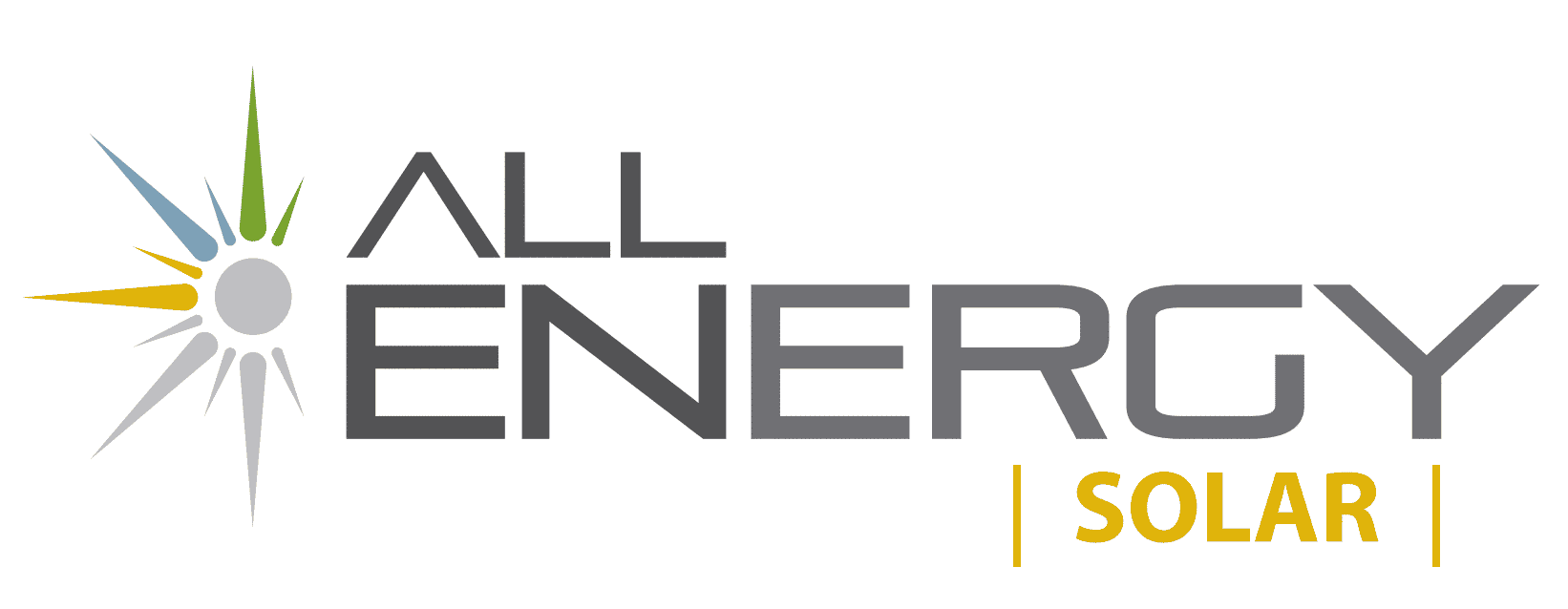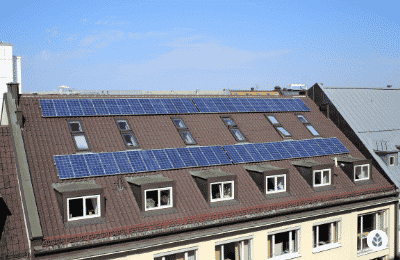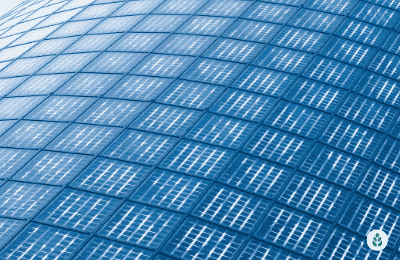
How Much Do Solar Panels Cost in Minnesota? (2024 Savings Guide)
In this guide on the cost of solar panels in Minnesota, you’ll learn:
- What the average cost of going solar is in the Land of 10,000 Lakes
- How Minnesotans can save money when going solar
- Which local installation companies have the best prices
Each product and or company featured here has been independently selected by the writer. You can learn more about our review methodology here. If you make a purchase using the links included, we may earn commission.
Minnesota is a surprisingly great place for home solar power. At just under $29,000, the cost to install solar panels in Minnesota is below the national average – and you’ll save more money over time by converting to solar power than you would in many other states.
However, that price tag is just an average, and there are a variety of factors that can influence the cost for your home. In this guide, we’ll go over how much solar panels cost in Minnesota, as well as some factors that can affect your system pricing.
We also know that going solar represents a hefty investment, so we’ll also offer some tips on how to save money in the process and boost the amount you’ll ultimately save.
What Will Your Solar Panel System Cost in Minnesota?
For the typical Minnesota home, the total cost for a solar power system comes in at $28,800 before incentives, or a net cost of $20,160 after the federal investment tax credit is factored in.
This estimate is based on two factors: the average cost per watt to install panels in Minnesota, and the average size system homeowners in the state need. The average cost to install solar panels in Minnesota is around $3.60 per watt, and the typical solar array size in the state to meet local energy demands is 8 kilowatts (kW).
However, not all homes will need an 8-kilowatt system. Larger homes may need larger systems due to the energy needed to heat and cool them. Smaller homes may be able to get away with a smaller system. This is important to know, because the size of the solar power system you need is one of the most significant cost factors to consider.
Below are some typical system prices in the state based on size, which considers both monthly energy consumption and property square footage. You can look at a recent utility bill to see the amount of energy your home typically uses and find your place on the chart.
| Solar System Size | Energy Use (per month) | House Size (sq ft) | Total Cost | Cost After the Federal Tax Credit | Energy Savings (over 25 years, after system is paid off) |
| 5 kW | 500 kWh | 1,400 | $18,000 | $12,600 | $19,845 |
| 6 kW | 600 kWh | 1,600 | $21,600 | $15,120 | $21,960 |
| 7 kW | 700 kWh | 1,800 | $25,200 | $17,640 | $24,075 |
| 8 kW | 800 kWh | 2,000 | $28,800 | $20,160 | $26,190 |
| 9 kW | 900 kWh | 2,200 | $32,400 | $22,680 | $28,305 |
| 10 kW | 1,000 kWh | 2,400 | $36,000 | $25,200 | $30,420 |
| 11 kW | 1,100 kWh | 2,600 | $39,600 | $27,720 | $32,535 |

All Energy Solar

Regional Service
Average cost
Pros
- Full-service home energy solutions
- Excellent reputation
- NABCEP-certified technicians
Cons
- Expensive

MN Solar and More, LLC

Local Service
Average cost
Pros
- NABCEP-certified technicians
- Offers rewards for customer referrals
- Excellent reputation
Cons
- Limited service area
- Limited information available on website
- Relatively young company

Sun Badger Solar

Regional Service
Average cost
Pros
- Offers products from leading manufacturers
- Competitive pricing
- Offers rewards for customer referrals
Cons
- No leases or PPAs
- Relatively young company
How Do Minnesota’s Solar Prices Compare to the National Average?
The average cost per watt for solar panels in Minnesota is well above average. Minnesotans typically pay around $3.60 per watt, which is about 9% higher than the national average of $3.33. That means that your money won’t go as far in Minnesota as it will in other states, at least on a watts-per-dollar basis.
However, Minnesota homeowners consume an average of 775 kilowatt-hours (kWh) of electricity per month, which is more than 100 kWh lower than the national average of 881 kWh. The lower your energy needs are, the smaller your system needs to be to offset them.
Since energy demands are below average in Minnesota, residents only need an 8 kW system, on average, whereas most Americans need 9.5 kW to offset their consumption. A lower system size means fewer panels are needed, which, in turn, means a lower installation cost.
On average, a solar array in Minnesota will cost around $1,000 less than a standard system in most other states, so your total cost is lower, despite the above-average per-watt price.
What Are the Main Factors of Solar System Costs in Minnesota?
Solar panel systems in Minnesota commonly cost between $12,600 and $27,720, which is a massive range. The price range is so large because there are many factors that determine what size system you need and how much power output is required to maximize your long-term savings. Some of the most impactful cost factors include the following:
- Your monthly energy needs
- Whether or not you install a solar battery
- The efficiency of your panels
We’ll explain how each of these factors makes a difference in your total system price in the following sections.
The Below-Average Energy Needs in Minnesota
One of the primary reasons solar panel costs in Minnesota are below average is that residents in the state use less electricity than most Americans. According to the Energy Industries Association (EIA), the typical monthly consumption in MN is 775 kilowatt-hours (kWh), compared to the national average of 881 kWh.
Since solar arrays are sized to meet your energy needs, a lower demand for electricity means you can get away with a smaller system and still have your energy rates offset. Minnesota residents need systems that are, on average, 1.5 kW smaller than homeowners in other states, which leads to a typical per-system savings of $5,400, based on per-watt prices in Minnesota.
We still recommend oversizing your system a bit to make sure that your electric bills are totally offset, but that still yields pretty significant savings over an oversized system in other areas throughout the country.
Net Metering and the Appeal of Solar Batteries in Minnesota
Another reason all-in system prices are below average in Minnesota — even when considering add-on products like solar batteries — is that many residents don’t opt to get batteries installed alongside their panels.
The state mandates net metering for all investor-owned utilities (IOUs), municipal utility companies and electric cooperatives, which means you’ll earn credits for all of the solar energy you produce beyond what your home needs. You can then use those credits to pay for electricity you need to pull from the grid when your panels aren’t generating sufficient energy, like at night or on cloudy days.
With the state’s net metering policy, most Minnesotans can avoid needing to pay the added cost of a battery — around $10,000 — and still heavily offset or even eliminate their energy bills.
Provided you choose high-efficiency panels that will make the best of your net metering program, we’d recommend you don’t get a battery unless you want the added benefit of being able to maintain electricity through power outages.
The Below-Average Amount of Sunlight in Minnesota
Finally, Minnesota residents see around 195 sunny days per year, which is below the national average of 205 sunny days. Since the sunlight availability is below average, it’s wise to invest in high-efficiency solar panels to maximize the amount of energy you can offset with your system. This is especially true since the net metering rate isn’t one-to-one with the retail rate for electricity.
We suggest paying more for high-end panels, like those from Maxeon, as these will produce more power for your home and give you the best chance of offsetting your utility bills. You might pay more for high-efficiency panels upfront, but over time, they will very likely save you money.
That does mean that solar panel installation costs in Minnesota will tend to be a little higher than they would be if you could get sufficient energy from lower-efficiency options. However, the smaller array size requirements should still save you some money.
Additional Costs of Going Solar in Minnesota
Most solar customers know they’ll need to pay for solar panels and any major add-on products they might want, like solar batteries and electric vehicle (EV) chargers, but there are some other charges that most homeowners will need to pay that get overlooked. We’ll explain what some of these costs are for and how much they tend to be below.
- Additional solar equipment: In addition to solar panels, rooftop solar energy systems will also need mounting brackets, mounting hardware, inverters, wiring and conduit. These items can total a few hundred dollars in most cases, with the mounting brackets and separate inverters potentially totaling a few thousand dollars. Squirrel guards are also highly recommended, and many Minnesotan solar customers opt for snow guards as well, given the above-average amount of snowfall residents see each year.
- Equipment markup and administration fees: All solar installers in Minnesota charge different prices for the equipment they install, which can include some kind of product markup. Some companies will also charge administration fees for filling out permitting paperwork, filing for solar incentives and rebate programs and designing your system.
- Building permits: Every municipality in Minnesota requires that building permits be filed before any home solar energy system is installed. The fee for filing permits usually ranges from $50 to $250. For example, the City of St. Paul charges a flat fee of $138 for most residential solar projects.
- Interconnection application fee: Finally, your utility company will require an interconnection application to be filed before your system can be connected to the grid. In most cases, your installer will fill this out for you, but any application fees — usually between $25 and $150 — will be passed on to you.
Watch Below: How Well Will Your Solar Panels Still Work When Covered In Snow?
What Maintenance Costs Can Solar Owners Expect in Minnesota?
Thankfully, there are virtually no maintenance costs you’ll be on the hook for after installation in Minnesota. Some solar customers pay to have panel cleaning services completed, as this clears off pollen and debris and helps maximize the energy production rate of your panels. However, this isn’t a necessity, and the rainfall in the state should be plenty to keep your panels clean.
There is a chance you’ll run into repair costs for manufacturer defects and other issues. Thankfully, your solar panel warranty should cover the common issues. Generally speaking, the only cost you should face for your panels in Minnesota is the purchase price, provided you have solid warranty coverage to protect your solar investment.
Which Solar Financing Options Will Help You Save the Most in Minnesota?
There are four common payment options for solar panels that you’ll have access to in Minnesota, including cash, solar loans, solar leases and power purchase agreements (PPAs).
We strongly recommend paying in cash if you can make it work. Paying in cash means you’ll own your solar electric system immediately, giving you the shortest payback period and the highest long-term solar savings. Paying in cash also lets you take the federal tax credit and provides a bump to your home value.
Cash is the least accessible option, but it’s a bit more realistic in Minnesota than in other states, given the slightly below-average system prices in the area.
A solar loan is our second recommendation if you can’t afford to pay in cash. Solar loans still give you access to the federal tax credit — an average value of over $8,600 in Minnesota — and improve the value of your home. However, they do require that you pay interest on top of the base system price, which means your payback period will be a little longer, your all-in system total will be higher and your savings will be lower.
A solar lease might be a decent option for you if you can’t make a cash purchase work and you don’t have the credit score required to qualify for a loan. Leases are highly accessible, as they have few credit requirements and no down payment required.
However, they save much less over time than paying with cash or a loan, and they don’t let you take the federal credit.
We generally don’t recommend PPAs because they save even less than leases in many cases and also don’t let you take the federal credit. If you can’t make cash or a loan work, we’d recommend a lease over a PPA.
If you’re looking for a solar company in Minnesota and aren’t sure which financing option will work for you, we recommend checking out All Energy Solar or SunPower. Both of these companies are highly recommended and accept all four payment options.
You can also get a better idea of which options you can afford by using our solar calculator to find out what your system will cost. You can then choose the option that seems most appealing based on the upfront cost and long-term savings in the table below.
| Financing Method | Total 25 Year Savings (estimated) | Initial Costs (estimated, after the ITC) | Monthly Payments (estimated) | Payback Period (estimated) |
| Cash | $24,141 | $20,160 | $0 | 12 years |
| Loan | $19,000 | $0 | $120 to $200 | 16 years |
| Lease | $5,000 | $0 | $110 | N/A |
| PPA | $4,000 | $0 | $110 | N/A |
What Are Other Ways You Can Save When Going Solar in Minnesota?
With the average system price sitting at over $20,000, Minnesotan residents usually look for as many money-saving strategies as possible when converting to clean energy. Below are a handful of things you can do to help keep your conversion costs as low as possible.
- Choose an energy-efficient panel brand
- Don’t install a solar battery
- Take advantage of Minnesota solar incentives and rebates
We’ll explain how each of these tips can save you money on your photovoltaic (PV) system in the following sections.
Choose a High-Efficiency Panel Brand
One of the best things you can do in Minnesota to reduce your long-term system price and maximize your savings is to choose a panel brand that has a high efficiency rating, like panels from Maxeon. These are more expensive and will push up your initial costs, but in our opinion, they’re well worth the investment.
Minnesota sees a below-average number of sunny days per year, which means it’s important to take full advantage of the available sunlight. High-efficiency panels produce more power in all situations, so they’re more likely to offset your electricity rates and produce sufficient power to call on via net metering when the sun isn’t shining.
Additionally, parts of Minnesota see well-above-average amounts of snowfall, particularly in the snow belt around Lake Superior. Snow can cover your panels for days at a time and cause your production to plummet or cease entirely. A high-efficiency panel is more likely to generate sufficient power in sunny, clear conditions to offset losses when your panels are covered in snow, once again taking advantage of net metering.
Avoid Solar Batteries
As we mentioned above, solar batteries like the Tesla Powerwall can be a tempting option in Minnesota because they provide electricity through power outages, which are common in the area, especially during snow storms. However, batteries add an average of around $10,000 to your system total, and that total can be significantly higher if you install multiple batteries.
Solar batteries can pay for themselves in areas where net metering isn’t available, but all Minnesotans have access to net energy metering. While NEM won’t let you maintain power through blackouts, it will make it much easier to offset and even eliminate your electricity costs without a battery, provided you have high-efficiency panels installed.
Ultimately, you could save $10,000 or more on your solar panel installation total by avoiding batteries, and your savings over time shouldn’t be affected at all.
Take Advantage of Local Solar Incentives
One of the easiest ways to save on your solar project is to take advantage of as many solar incentives as you can.
First and foremost, all residents can access the federal solar tax credit, which can effectively save you an average of $8,640 on your solar array.
Minnesota has two statewide solar perks, including a sales tax exemption and a property tax exemption, which, combined, can save an average of approximately $7,500 over the life of your system.
There are also quite a few local solar incentives available from individual cities and electric companies. We’ll list some of the entities that offer local incentives, but you can get more information on these by checking out our guide to solar incentives in Minnesota:
- Minnesota Power
- Austin Utilities
- The City of Minneapolis
- The City of Chaska
- Dakota Electric Association
- Rochester Public Utilities
- Owatonna Public Utilities
- Shakopee Utilities
- Xcel Energy (Solar Rewards Program)
What Are the Typical Costs of Minnesota’s Solar Installers?
The cost of your solar array will depend, to some extent, on which installer you choose. Every solar installation company in Minnesota uses different labor prices and can mark up panels and other equipment, both of which will have an effect on your pricing.
The table below includes some relative cost information for what we consider to be the best solar companies in Minnesota. You can use this information to determine which companies are likely to align with your budget.
| Solar Company | Superlative | EcoWatch Rating (Out of 5.0) | BBB Rating | Average Cost ($–$$$$$) |
| All Energy Solar | Outstanding Regional Installer | 4.5 | A+ | $$$$$ |
| MN Solar and More, LLC | Best Twin Cities Metro Installer | 4.0 | A+ | $$ |
| SunPower | Best National Provider | 5.0 | A+ | $$$$ |
| Winona Renewable Energy | Top Local Installer | 4.0 | A+ | $$$ |
| Live Wire Solar & Electric | Solar Veteran | 4.0 | NR | $$ |
How Are Solar Costs and Regulations Trending In Minnesota?
The Solar Energy Industries Association (SEIA) reports that the price of solar panels in Minnesota has dropped by around 53% over the past decade. Prices have decreased across the country as the demand for solar grows, in large part because production is being scaled up. We expect prices to continue to drop over the next few years.
As far as solar incentives, there’s no indication that any of the existing perks will get downgraded or disappear in the near future. In fact, the state’s renewable portfolio standard (RPS) goal was recently extended to guarantee that 50% of the state’s electricity comes from clean energy sources by 2035. Since RPS goals typically drive incentives, we don’t expect the current benefits to go anywhere in the next decade.
If something were to change, it would likely be the net metering policy, as this is what is going through changes in many other states. We’d expect a tariff system or a downgrade to an avoided-cost rate, if anything, but there’s nothing to suggest that this will happen anytime soon.
With prices lower than they’ve ever been and incentives likely here to stay for the near future, now is a wonderful time to go solar in Minnesota. To capitalize on the current state of the solar industry in the state, you can use the tool below to get free quotes for a system for your home to get the conversion process started.
The cost information presented in this article is derived from a comprehensive analysis, incorporating data from multiple industry sources. The average cost per watt per state was calculated based on figures from Consumer Affairs, Energy Sage, and Berkeley Lab’s Electricity Markets & Policy Department. Additionally, monthly energy consumption and the average monthly cost of electricity were sourced from the U.S. Energy Information Administration, ensuring a well-rounded and accurate representation of the information presented.
FAQs: Minnesota Solar Panel Costs
In the sections below, we’ll provide answers to some of the most common questions we see from residents about the cost of solar panels and the process of converting in Minnesota.
The average price of a solar power system in Minnesota is $20,160 after the federal solar tax credit is applied or $28,800 without any incentives. These numbers assume you need an 8 kW system — which is average in Minnesota — and pay the typical local cost per watt of $3.60.
In most cases, yes! Minnesotans use below-average amounts of electricity, which means they can get away with smaller and more affordable solar arrays. The conversion cost is below the national average. Plus, the typical solar customer in the state sees energy bill savings that pay for the panels in just 12 years and then save an additional $24,141 after that.
The average solar array in Minnesota pays for itself in just 12 years, which is right in line with the national average. Since most panels last for a minimum of 25 years, you’ll have an additional 13+ years of energy savings after your panels are paid off, with net savings totaling over $24,000.
Yes! According to research from Zillow, installing a solar array will improve your home value by 4.1%. Given the average home values in Minnesota, that’s an increase of over $13,000. Since solar systems on south-facing roofs produce the most energy, according to the Department of Energy (DoE), homes with roofs that slope to the south could see an even greater value bump.
Related articles
Top Solar Installers In Minnesota Cities
Comparing authorized solar partners
-
- Full-service home energy solutions
- Excellent reputation
- NABCEP-certified technicians
- Expensive
A+Outstanding Regional Installer
Having trouble deciding? Click below and use our process to receive multiple quotes instead:

 233k
233k  41k
41k  Subscribe
Subscribe 





